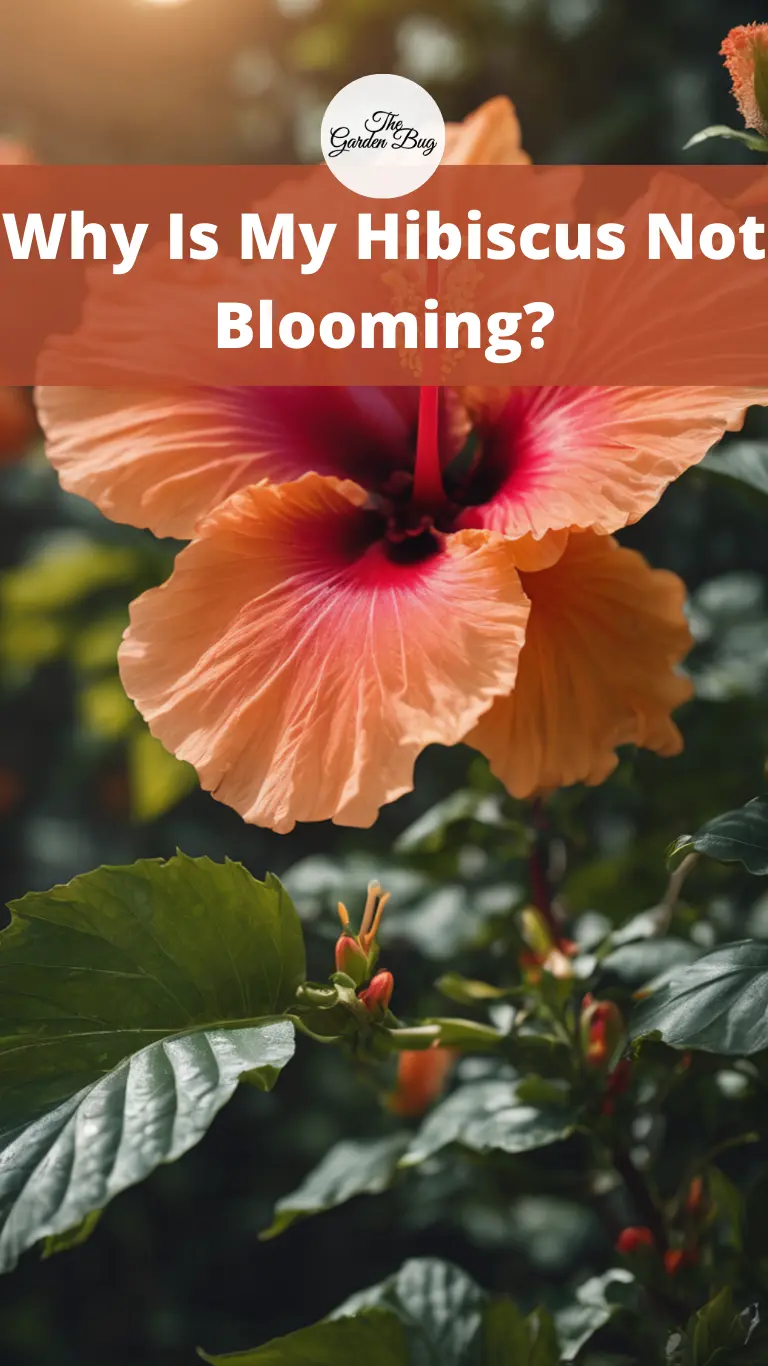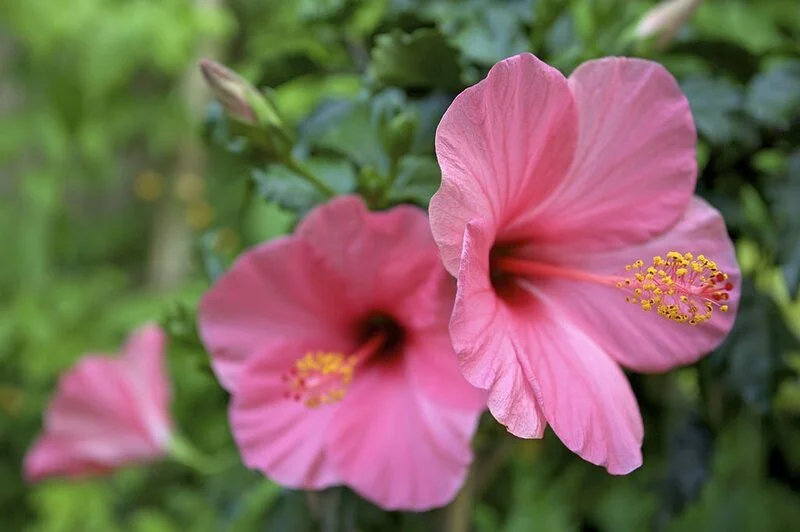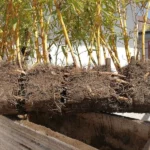Hibiscus plants are known for their stunning, colorful blooms that add beauty to any garden or landscape. However, it can be disheartening when your hibiscus doesn’t produce flowers as expected. In this article, we’ll explore the reasons behind your hibiscus not blooming and provide solutions to encourage those gorgeous blooms.
- BIG BLOOMS! Sun-loving tropical hibiscus feature bold, 5 inch plate-shape flowers
- ALL SUMMER COLOR! Tropical hibiscus bloom all summer.
- ADDS COLORFUL FOCAL POINTS! You can use them on decks or patio, in landscape or in your container gardens.
Understanding Hibiscus Blooming Habits
Hibiscus plants have their own blooming patterns and preferences. Some hibiscus varieties bloom all year round, while others have specific blooming seasons. It’s essential to understand the natural blooming habits of your hibiscus to manage your expectations.
Hibiscus blooms typically last for a short period, usually a day or two. They open in the morning and close by the evening. However, the plant continuously produces new buds that eventually turn into beautiful flowers.
Factors like sunlight, temperature, pruning, fertilization, and plant maturity affect hibiscus blooming. By understanding these factors, you can determine the possible causes for your hibiscus not blooming and take appropriate action.
Remember, each hibiscus plant is unique, and blooming habits can vary. So, let’s delve into the specific factors that can impact the blooming of your hibiscus and explore solutions to encourage those vibrant flowers.
Factors that Affect Hibiscus Blooming
Several factors can influence the blooming of your hibiscus. Understanding these factors will help you address any issues preventing your hibiscus from blooming:
- Sunlight: Hibiscus plants need plenty of sunlight to bloom. Lack of sufficient sunlight can inhibit flower production. Ensure your hibiscus receives at least 6 hours of direct sunlight each day.
- Temperature: Hibiscus prefers warm temperatures to thrive and bloom. Extremely hot or cold temperatures can hinder blooming. Maintain a temperature range of 60-90°F (15-32°C) for optimal flower production.
- Pruning: Improper pruning or neglecting to prune can impact blooming. Regularly prune your hibiscus to remove dead or weak branches and stimulate new growth.
- Fertilization: Insufficient or improper fertilization can limit blooming. Use a balanced fertilizer formulated specifically for hibiscus to provide essential nutrients. Apply fertilizer according to the package instructions.
- Watering: Inconsistent watering practices, such as overwatering or underwatering, can affect blooming. Hibiscus plants require regular watering, keeping the soil consistently moist but not waterlogged.
- Formulated for the unique growing habits of Hibiscus
- Developed and used by commercial hibiscus growers in Homestead, FL
- Applied directly on top of soil & mulch, no mixing required
- 2lb bag is equipped with a resealable top for easy storage
Diagnosing the Issue with Your Hibiscus
If your hibiscus is not blooming, it’s essential to diagnose the specific issue. Here are a few common problems to consider:
- Lack of sunlight: Check if your hibiscus is receiving enough direct sunlight. If it’s in a shaded area, consider moving it to a sunnier spot.
- Improper pruning: Assess your pruning practices. If you haven’t pruned your hibiscus in a while or have pruned excessively, it may affect blooming. Trim any dead or weak branches and promote healthy growth.
- Nutrient deficiency: Examine the leaves of your hibiscus. If they appear yellow or show signs of nutrient deficiency, it may hinder blooming. Apply a balanced fertilizer to provide the necessary nutrients.
- Watering issues: Evaluate your watering routine. Hibiscus plants prefer consistent moisture but not excessive water. Ensure you water the plant adequately and avoid waterlogged soil.
By diagnosing the specific issue with your hibiscus, you can take the necessary steps to encourage blooming and enjoy a vibrant display of flowers.
Solutions for Encouraging Blooming in Hibiscus
If your hibiscus is not blooming, here are some solutions to encourage flower production:
- Sunlight: Ensure your hibiscus receives ample sunlight. If it’s not getting enough, move it to a sunnier location or trim nearby branches that may be blocking the sunlight.
- Pruning: Regularly prune your hibiscus to promote new growth and blooming. Remove dead or weak branches and trim back any overgrown areas.
- Fertilization: Use a balanced fertilizer specifically designed for hibiscus plants. Follow the instructions on the package to provide the right nutrients for blooming. Apply fertilizer during the active growing season.
- Watering: Maintain consistent moisture in the soil by watering your hibiscus regularly. Avoid overwatering or allowing the soil to dry out completely. Mulching around the base of the plant can help retain moisture.
- Pest control: Check for any pests that may be infesting your hibiscus, as they can affect blooming. Use appropriate methods to control pests, such as handpicking or using organic insecticides.
- Temperature control: Protect your hibiscus from extreme temperature fluctuations. If temperatures drop below 32°F (0°C), move potted hibiscus indoors or cover them with a frost cloth.
Additional Care Tips for Hibiscus Blooming
To enhance blooming in your hibiscus, consider the following care tips:
- Regular maintenance: Keep your hibiscus healthy by removing spent flowers and pruning as needed. This encourages new blooms to form.
- Adequate spacing: Ensure that hibiscus plants have enough space to grow and receive proper air circulation. Crowding can hinder blooming.
- Balanced watering: Water your hibiscus deeply but allow the topsoil to dry slightly between watering sessions. Avoid waterlogging the soil, as it can lead to root rot and hinder blooming.
- Winter protection: If you live in a region with cold winters, provide winter protection to your hibiscus plants. Move potted hibiscus indoors or cover them with a frost cloth to prevent frost damage.
By implementing these solutions and following the additional care tips, you can encourage blooming in your hibiscus plants and enjoy their beautiful flowers for a more extended period.
Frequently Asked Questions About Hibiscus Blooming
Why is my hibiscus not blooming?
There can be several reasons for a hibiscus not blooming, including insufficient sunlight, improper pruning, lack of nutrients, overwatering or underwatering, pests, or extreme temperatures.
How much sunlight does a hibiscus need to bloom?
Hibiscus plants thrive in full sunlight, ideally getting at least six hours of direct sunlight each day. Insufficient sunlight can result in limited or no blooming.
Should I prune my hibiscus to encourage blooming?
Yes, regular pruning is essential for hibiscus blooming. Pruning stimulates new growth and removes old, non-productive branches, allowing the plant to focus its energy on producing flowers.
When should I fertilize my hibiscus to promote blooming?
Fertilize your hibiscus during the active growing season, typically in spring and summer. Use a balanced fertilizer formulated for hibiscus plants and follow the instructions on the package for application rates.
Can pests affect hibiscus blooming?
Yes, pests like aphids, spider mites, and whiteflies can infest hibiscus plants and hinder blooming. Regularly inspect your plants for pests and take appropriate measures to control them.
Is it normal for hibiscus to stop blooming during winter?
Yes, many hibiscus varieties enter a period of dormancy during winter, which may result in reduced or no blooming. Providing winter protection and maintaining proper care can help ensure blooming when the growing season resumes.
Conclusion
Ensuring healthy and blooming hibiscus plants requires understanding the factors that affect blooming and providing the necessary care. By addressing issues like insufficient sunlight, improper pruning, nutrient deficiencies, and pest infestations, you can encourage your hibiscus to produce abundant and vibrant blooms. Remember to follow proper watering practices and protect your plants from extreme temperatures. With the right care and attention, your hibiscus will reward you with its stunning flowers for a long time to come.





